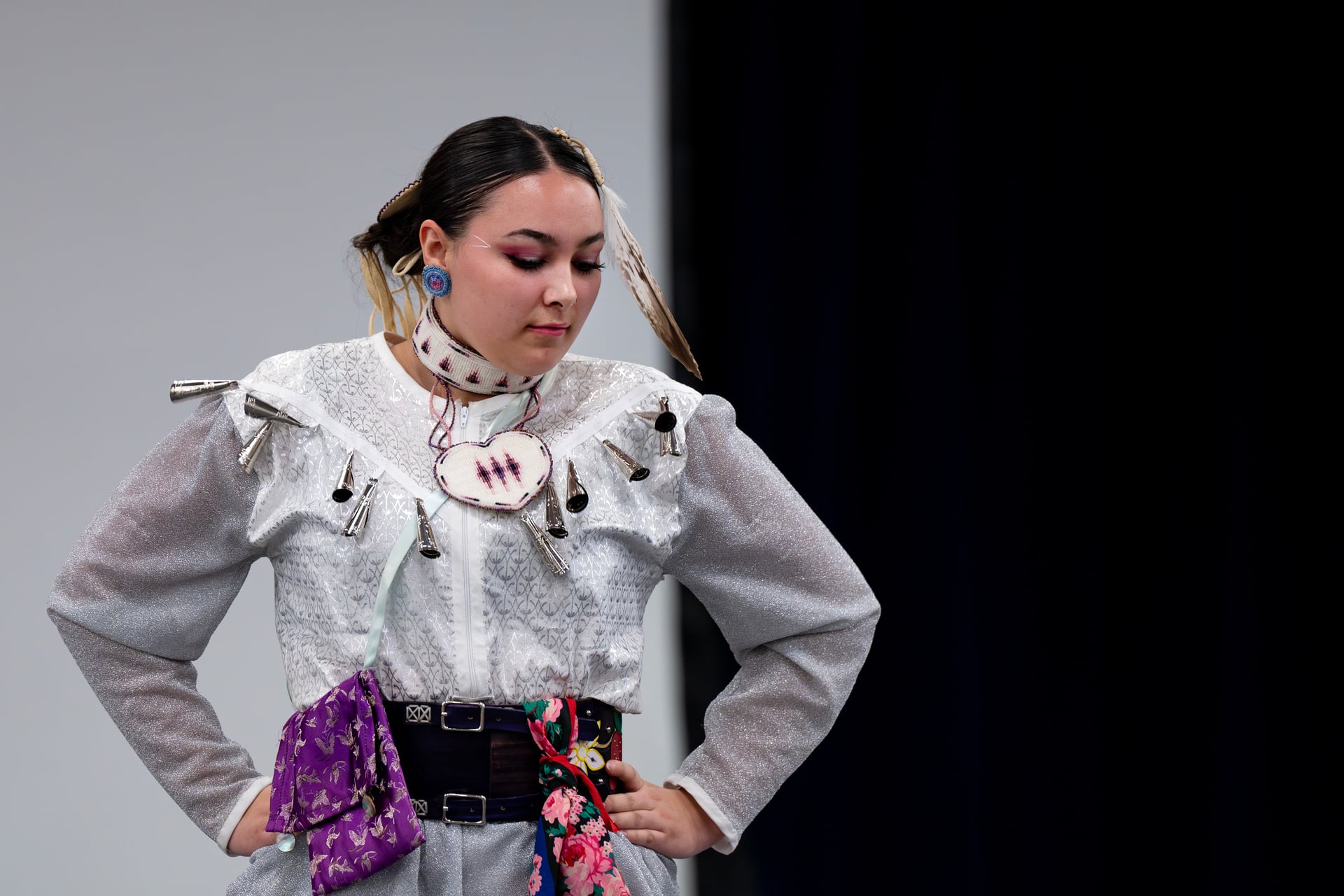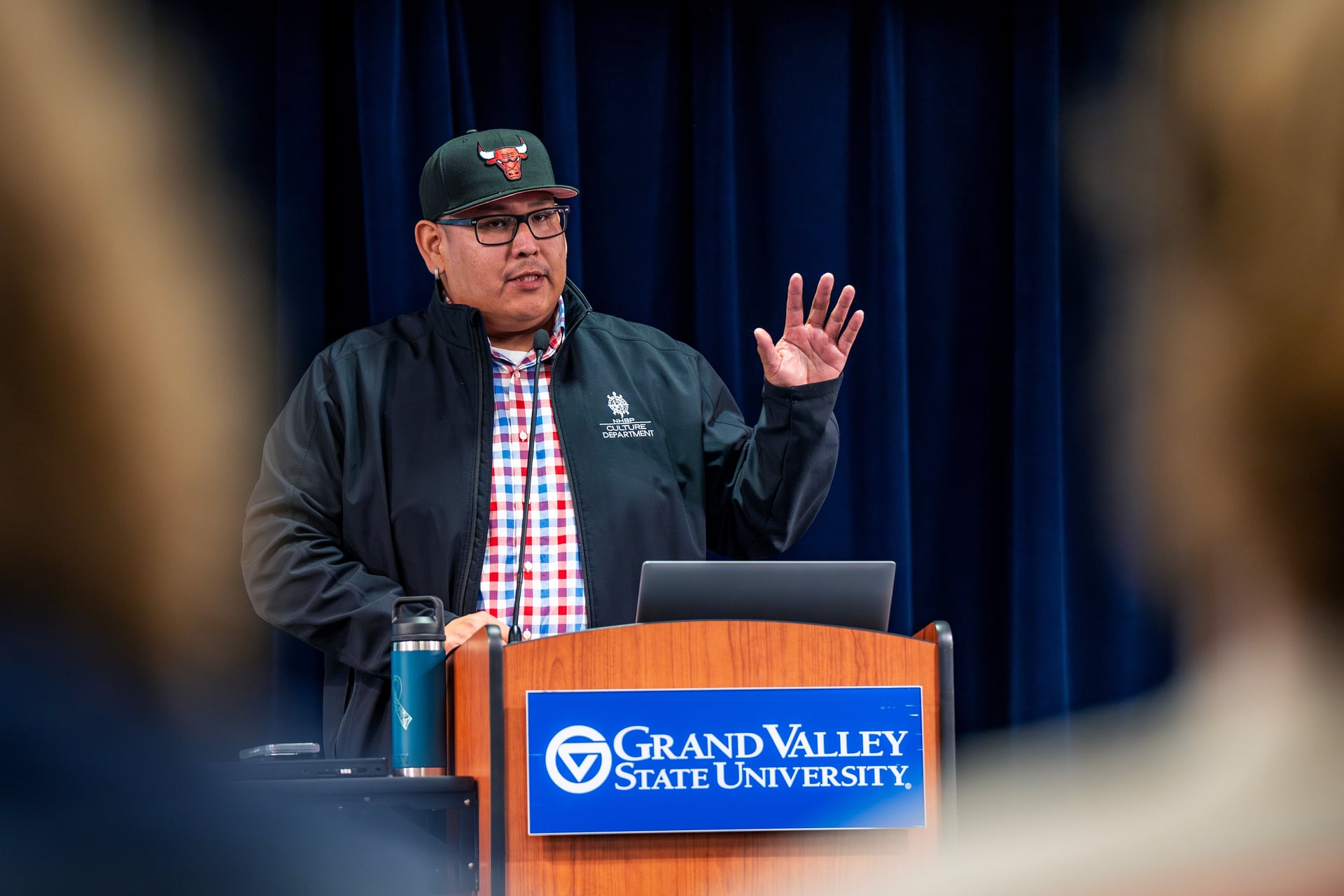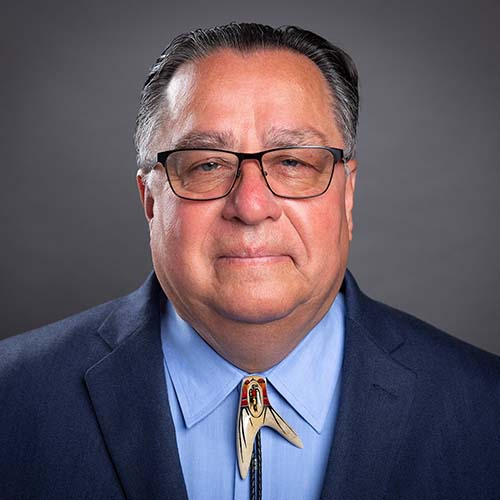
- Details
- By Levi Rickert
ALLENDALE, Mich. — Mike Medawis, language coordinator at Nottawaseppi Huron Band of the Potawatomi, told an audience of students and faculty at Grand Valley State University (GVSU) that tribal languages are in a state of emergency. He added if we do not act they may become extinct.
Medawis spoke at GVSU on Wednesday for the “Indigi-Fest: All About Sovereignty” that was part of the university’s Native American Heritage Month celebration.
“If we lose our language, we will have done what the government failed to do for centuries, to eradicate our language and our way of life as the Creator meant for us,” Medawis, who is Potawatomi, Odawa, and Ho-Chunk. “Our ceremonies are dependent on the use of our language today. Some of our people are confused and have no identity because they do not know our language.”

GVSU’s Indigi-Fest was a day-long event that provided university faculty and students an opportunity to learn about Native American culture, including language preservation that Medawis addressed.
Match-E-Be-Nash-She-Wish Band of Pottawatomi (Gun Lake Tribe) Councilor Ed Pigeon kicked off the day with a presentation on tribal governance utilizing tribal sovereignty.
Other topics included presentations on food sovereignty, decolonizing social work and education, Anishinaabemowin Language, an introduction to powwow, and we finish with a movie and panel discussion on the movie, Two-Spirit Powwow by Rick Bacigalupi.
“The day was filled with learning about Anishinaabe culture and ways of being, allowing for students, faculty, and staff to fully engage with our community’s traditional knowledge keepers. Our NASA and Mno’Chigewin students pulled together to create this inclusive space where all felt comfortable to be, we tried to create that welcoming feeling that I get when I’m in community, Belinda (Lin) Bardwell (Little Traverse Bay Bands of Odawa Indians), GVSU’s senior advisor on Native American Affairs and assistant director of Office of Multicultural Affairs, said.
https://nativenewsonline.net/education/gvsu-s-indigi-fest-emphasized-sovereignty-andculture-during-native-american-heritage-month-celebration#sigProIdb22494f3f3
Before the movie was shown, there was a powwow demonstration which highlighted the different styles of dance seen at powwows including Men’s and Women’s Traditional, Fancy Shawl, and Jingle.
Each of the four dancers representing the different styles of dance spoke about what powwow meant to them and explained that hundreds of hours and dollars go into each regalia. Oftentimes, each dancer’s regalia represents what community they come from and represent.
Photos by Cory Morse for Grand Valley State University. Neely Bardwell contributed to this article.
More Stories Like This
American Indian College Fund Launches National Campaign for Native American Heritage MonthFour-Day Event Will Connect TCUs with Native Students Interested in Pursuing Higher Education
Native Women Share Their Journeys in Higher Education in New Book
2025 Tribal Adaptive Student-Athlete of the Year Scholarship Recipients Announced
Ojibwe Scholar Anton Treuer to Speak at GVSU for Native American Heritage Month
Help us tell the stories that could save Native languages and food traditions
At a critical moment for Indian Country, Native News Online is embarking on our most ambitious reporting project yet: "Cultivating Culture," a three-year investigation into two forces shaping Native community survival—food sovereignty and language revitalization.
The devastating impact of COVID-19 accelerated the loss of Native elders and with them, irreplaceable cultural knowledge. Yet across tribal communities, innovative leaders are fighting back, reclaiming traditional food systems and breathing new life into Native languages. These aren't just cultural preservation efforts—they're powerful pathways to community health, healing, and resilience.
Our dedicated reporting team will spend three years documenting these stories through on-the-ground reporting in 18 tribal communities, producing over 200 in-depth stories, 18 podcast episodes, and multimedia content that amplifies Indigenous voices. We'll show policymakers, funders, and allies how cultural restoration directly impacts physical and mental wellness while celebrating successful models of sovereignty and self-determination.
This isn't corporate media parachuting into Indian Country for a quick story. This is sustained, relationship-based journalism by Native reporters who understand these communities. It's "Warrior Journalism"—fearless reporting that serves the 5.5 million readers who depend on us for news that mainstream media often ignores.
We need your help right now. While we've secured partial funding, we're still $450,000 short of our three-year budget. Our immediate goal is $25,000 this month to keep this critical work moving forward—funding reporter salaries, travel to remote communities, photography, and the deep reporting these stories deserve.
Every dollar directly supports Indigenous journalists telling Indigenous stories. Whether it's $5 or $50, your contribution ensures these vital narratives of resilience, innovation, and hope don't disappear into silence.
 The stakes couldn't be higher. Native languages are being lost at an alarming rate. Food insecurity plagues many tribal communities. But solutions are emerging, and these stories need to be told.
The stakes couldn't be higher. Native languages are being lost at an alarming rate. Food insecurity plagues many tribal communities. But solutions are emerging, and these stories need to be told.
Support independent Native journalism. Fund the stories that matter.
Levi Rickert (Potawatomi), Editor & Publisher


